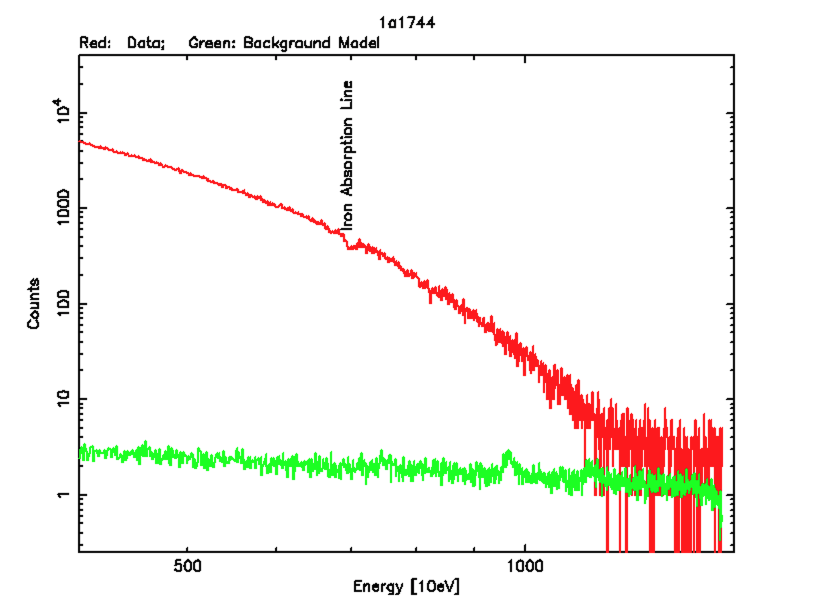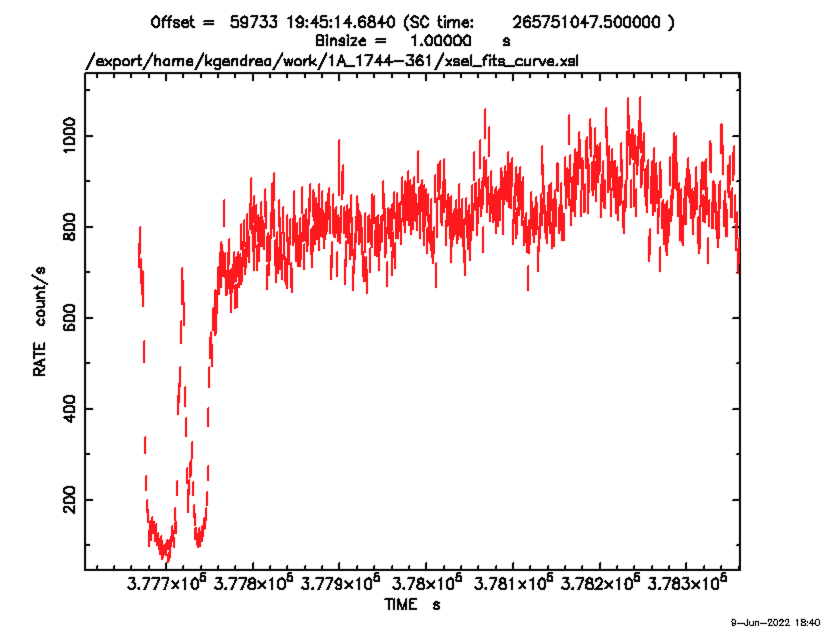NICER / ISS Science Nugget
for June 9, 2022
Probing absorption of X-rays in a neutron-star binary
On May 31, JAXA's MAXI payload team reported a slow brightening of X-rays from the direction of the known neutron-star binary system 1A 1744-361, last seen in outburst in 2013. The association between the newly brightening source and the classical 1A 1744 system was confirmed with images obtained by NASA's Swift observatory's X-Ray Telescope, and NICER began observing 1A 1744 on June 3. Preliminary results of these observations were reported by Mason Ng (MIT) et al. in
Astronomer's Telegram #15424.
Initial data from NICER are consistent with results obtained by the Rossi X-ray Timing Explorer -- NICER's predecessor for time-domain X-ray astrophysics studies -- during earlier outbursts. Many intriguing properties of the system are recovered. The neutron star draws matter from a low-mass companion star, with the flow forming an accretion disk down to the neutron star surface. The energy spectrum in X-rays (below left) shows a prominent absorption feature from iron atoms in a tenuous plasma that lies between the innermost parts of accretion disk, which produce most of the X-ray emission, and our telescopes. This absorption feature is Doppler-shifted toward higher energies (a so-called "blue shift"), evidence for a high-velocity "wind" of gas exiting the system; the NICER measurement suggests an outflow speed on the order of 900 km/s. Another feature of the early NICER observations is "dipping" behavior (below right) -- prominent drops in X-ray brightness lasting several hundred seconds. These are thought to be due to obstruction from the outer reaches of the accretion disk, either because the disk thickens at large radii or because it is warped and/or precessing, so that the obstructions swing into and out of view. Additional measurements with NICER's unique sensitivity in low-energy X-rays, where absorption effects are best studied, promise to distinguish between these models and to provide new insights.


Figure: Left: NICER X-ray spectrum, accumulated in a 5 ks exposure, showing a close-up in the 4-11 keV photon energy range. An absorption feature at 7 keV, associated with ionized and blue-shifted iron atoms, is indicated. Right: X-ray brightness as a function of time during a longer NICER exposure, exhibiting a sharp decrease in the countrate of detected X-ray photons that lasts approximately 15 minutes before the brightness recovers to its original value. Such "absorption dips" are believed to result from structure in the outer reaches of the accretion disk obstructing our view of X-rays emitted close to the neutron star.
<< Previous
Main Index
Next >>